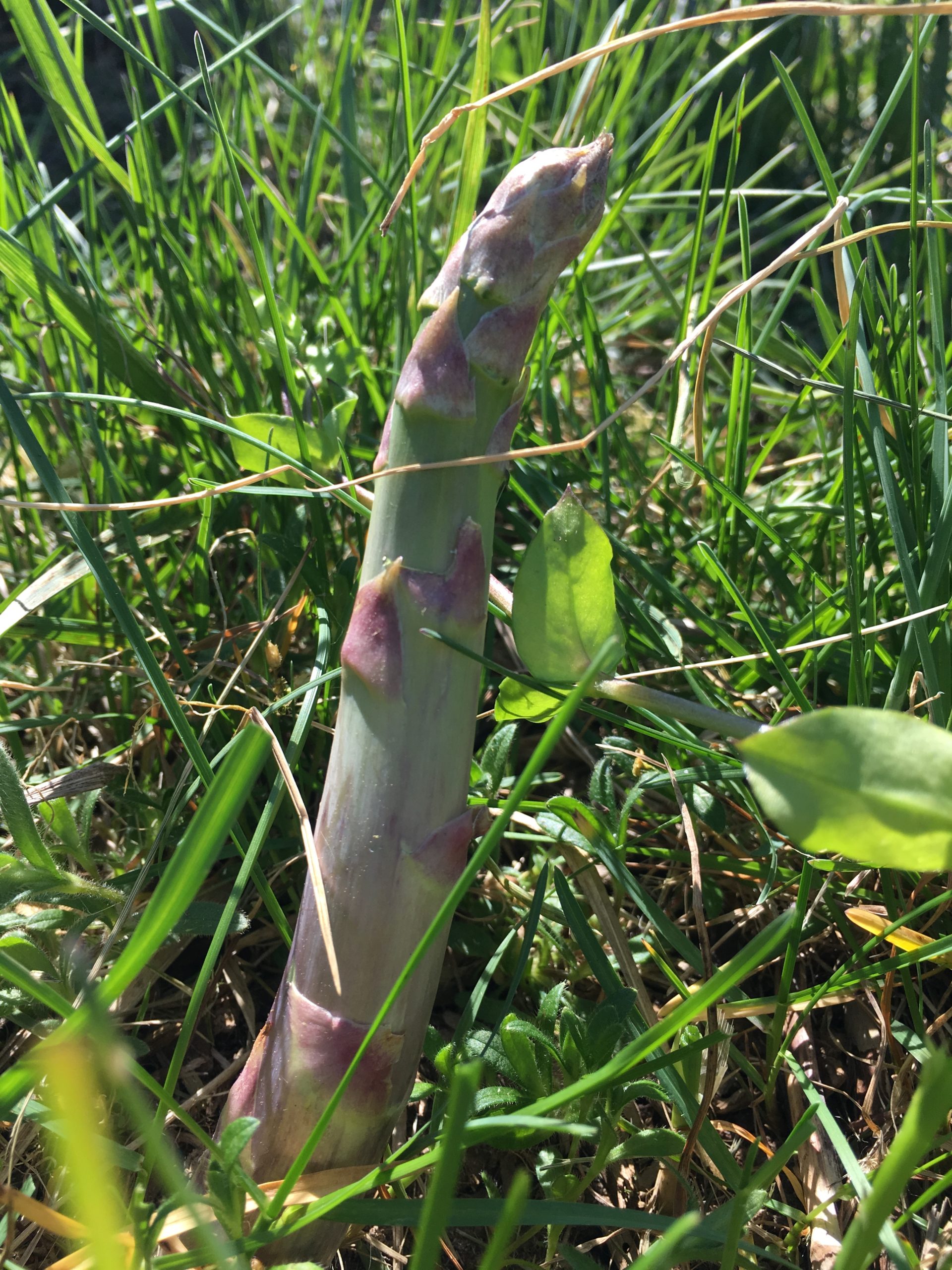Asparagus
is spring’s first vegetable, one of the few things on our dinner plate that we harvest from a perennial plant, meaning one that comes back from its own roots every year. Other spring vegetables, like lettuce and radishes, are quick-growing, cold tolerant plants that we seed into the ground as soon as it is warm and dry enough in April.
We have an asparagus patch at CRCC, in the far back corner of the garden. Most of the year you wouldn’t know it was asparagus – it looks like a messy patch of tall ferns emerging from a tangle of weeds. Every year the weeds take the patch over as we focus on the more immediate needs of other vegetables – the lettuce that needs to be watered, the kale that needs to be weeded, the tomatoes that need to be picked. Each year, at mid-summer, someone will look at the asparagus and say “I think it may have been overtaken by weeds this year. I think we’ve lost it.” And it seems to be true.
This year the asparagus didn’t appear at Easter, as it always has. There were weeds, and hard packed soil, and last year’s dry stalks, but no green shoots nosing their way toward the spring sunlight. The usual Easter story of life out of death, so plain to see in a risen spring garden, had gone awry. Early April, same story. A spade stuck into the ground at the base of the dead stalks uncovered no sleeping shoots just biding their time. Well, things die. Sometimes there is no resurrection story, no meaning or message at all. With plants, at least, all you need to do is call up the seed company and order a few more.
But then, of course, the asparagus came up. Late, slow, maddening. Missed its cue in the Easter pageant. On its own time.
We’ll be putting the spring vegetables seeds into the ground at the end of April, and some of them will imitate the asparagus. We’ll stand over them, waiting, fretting, sure they have died. And some of them will die. And some will simply take their own time, and spring up late, laughing at our doubt.

